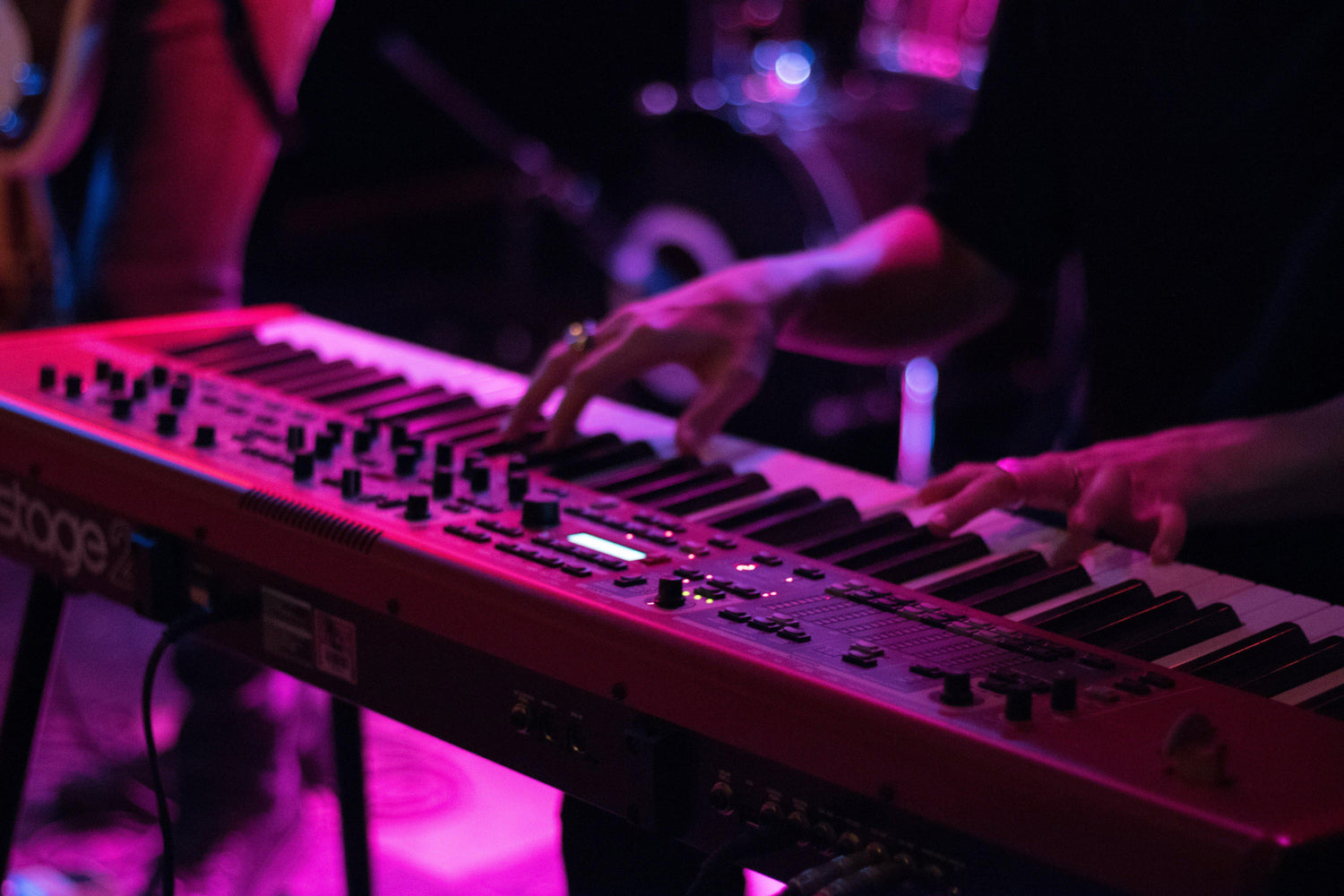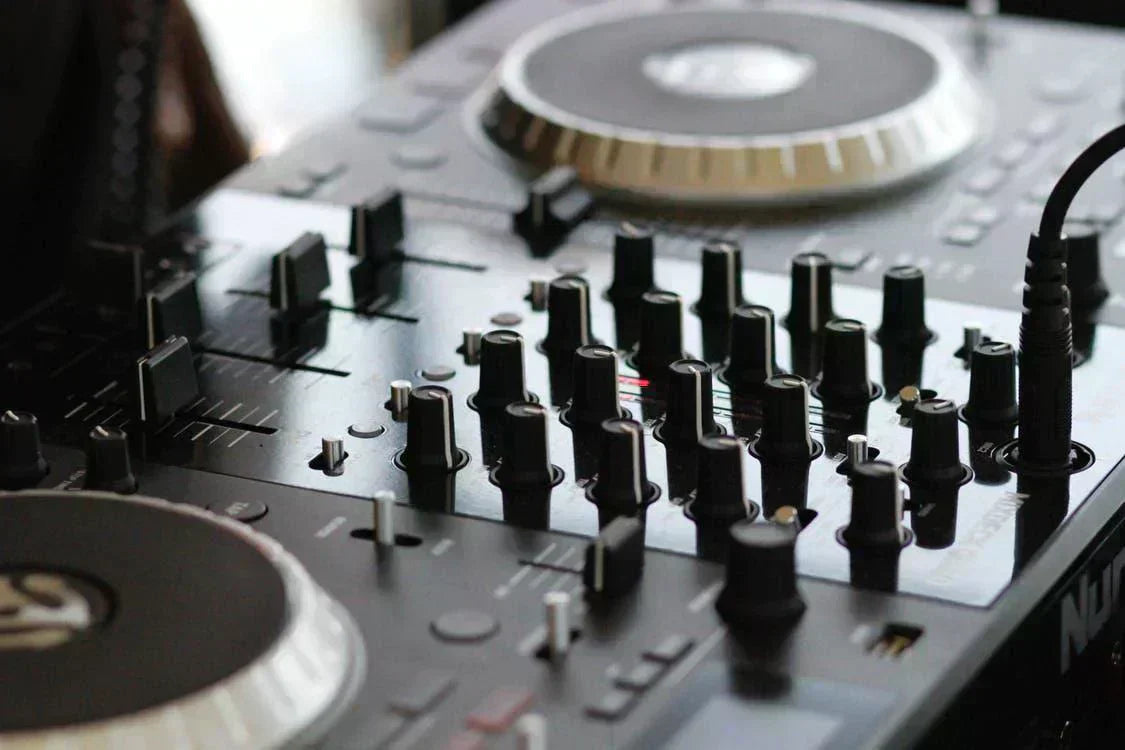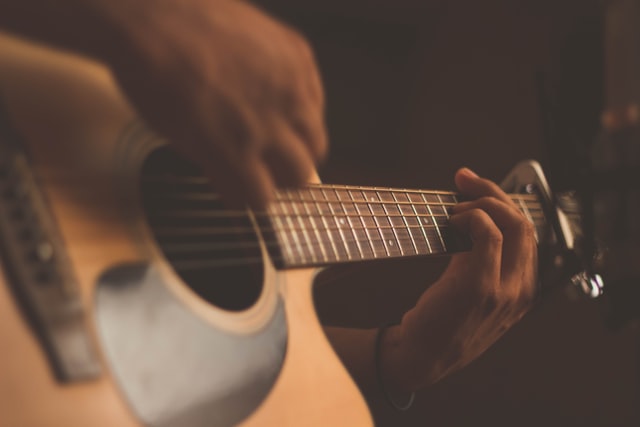The purchase options available for keyboards are aplenty. So much so that we found it challenging to compress the categories tri-fold for your deliberation. As always, looking for the right features, needs, and budget will help simplify the process. We hope our buying guide is fruitful toward your decision-making.
Key Considerations:
Finding your perfect keyboard is a much easier process if you can figure out a few things first:
-
What is your budget?
-
What is your musical taste and the music you look to learn?
-
Is this keyboard for a specific purpose; as a midi controller, or for live performances?
Keyboard Features:
Learning a little about the features of different keyboards will help you find the one that works for you. We’ll take a quick look at the distinctions and help enlighten the importance of these differences.
Action:
The action of a keyboard refers to the force required to get a sound out of the instrument. ‘Synth feel’ keyboards have minimal action, making the notes easy to press. This feel makes them fantastic for music where you’d be playing lots of notes quickly and moving the keyboard around often. Progressing up the scale, you have semi-weighted and weighted keyboards which require more force to push the key down. They feel like a real piano. This is helpful if you’ve been practicing on a grand piano and like the action it offers.

Closely related to action, the MIDI Velocity sensitivity of a keyboard is the difference in loudness based on the force applied to the key.
On a piano, gently pressing the key gives a mellow, restrained note with less treble, whereas hitting the note hard gives you a bright, singing note with lots of treble. Velocity Sensitivity varies from keyboard to keyboard and finding one which suits your playing is paramount. This feature helps modulate the played notes. The more inexpensive keyboards have no velocity sensitivity at all, playing all notes at the same volume regardless of how hard you press the keys.

MIDI Compatibility:
MIDI is a language that musical instruments use to ‘talk’ to other instruments or computers. When you hit a note on a MIDI-enabled keyboard, you send a message from the keyboard to playback the sound that is associated with that MIDI message at a specific volume, based on the MIDI velocity. Keyboards that are MIDI compatible will be more flexible and can be used to play sounds on a computer or another synthesizer rather than just the built-in onboard sounds.
Polyphony and Multitimbrality:
The higher the polyphony count on a keyboard, the more notes you can play simultaneously. This polyphony count comes into play when you are playing complex music like Jazz (you’ll be more likely to press many keys simultaneously.)
Multitimbrality allows you to have more than one sound loaded onto the keyboard, allowing you to use a bass guitar sound for the lower notes and a piano sound on the higher notes, for example. The higher the multitimbrality of the instrument, the more different sounds can be used at once.

Extras:
There’s a whole host of other things keyboards can do, but these vary from model to model. You get teaching facilities on some models that help you learn the instrument, drum and instrument accompaniment to play along with, synthesizer features where you can make your own sounds and many more. While some of the features may be of interest to you and stand out for its uniqueness, it is best to get a great keyboard that has basic functionality, good play feel, and the option to use the instrument in various settings as required.
Our Keyboard Recommendations
Now that you’ve understood the basic features of a keyboard, it's time to offer our recommendations based on your skill level and the model’s functionality.
All Rounder
At the lower end, you’ll find keyboards which have softer action and fewer keys than a ‘real’ piano. The action of the keys is personal preference, so don’t hold back from experimenting with display pieces before you make a call. The size of the smaller keyboards is also preferred for space constraints and portability reasons.
For a beginner, the Yamaha PSR-E463 would be a fantastic option. This keyboard has a variety of sounds to play with, the ability to record your playing to help analyse and improve upon in future practice sessions, and has a notable key feel. This keyboard could also be used as an inexpensive backup for a gigging musician.

The Japanese instrument king, Yamaha, has a fantastic track record for keyboards and other musical instruments. This model is durable and well built and used by many as a starter keyboard.
Stage Piano
If you are looking for a stage piano, you’ll know that you want a compact, full-featured keyboard that sounds great and is as lightweight as possible. Additionally, you’ll want essential port connections to rig up to the PA or in-home studio setup. A USB port is also a standard option to use as a MIDI interface for software like Cubase and Pro Tools.
The Yamaha P-45 Stage Piano is an incredible contender for a lightweight and great-sounding stage piano with all of the essential functionality you’d expect. In addition to the versatile sounds the keyboard has, you can split the keyboard into multiple layers, with different timbres on the keys for super ensemble performances.

We highly recommend this keyboard to teachers who can make use of the Duo mode, which allows teaching and learning from the same keyboard.
Synthesizer
No guide for keyboards would be complete without taking a look at synthesizers. Synthesizers are special-use keyboards, more often used for creating recorded music. Our favorite synth at the moment is the [synth] Roland Juno-DS88 Synthesizer. With 88 weighted keys, it will embed beautifully as part of a gig or as a studio tool.

Synthesizers are generally used to create sounds from scratch. Composers often spend days in search of the perfect sounds for a song. The Juno-DS88 is as good a value for money it can get. The front panel provides an expanded array of hands-on knobs and sliders for creating patches and adjusting sounds, and the keyboard allows you to connect expression pedals for even more control.
What Accessories Should I Buy?
Some notable additions to consider are:
Purchasing a keyboard can be an overwhelming experience for many, including those who already practice the art. However, we hope that our buying guide helped simplify the process and provide clarity into the behemoth industry. Have a look at our collection of keys and feel free to contact us for more informatino.
We are building a community of musicians and creators in the Middle East – those not afraid to follow their dreams and expand creative horizons. One way we support aspiring, active creators on their journey is by sharing a variety of content and information across essential topics in this complex and exciting industry of musical instruments and content creation gear.
When you're looking to pick up instruments or music and sound gear, get in touch with us for recommendations, the latest information on new and discontinued models, as well as sales and promotions. Whether you’re looking for a guitar, a keyboard, a piano, a drum kit, studio recording equipment, music production tools, or DJ gear – we can promise the widest variety, knowledgeable advice and the lowest prices across Dubai, Abu Dhabi, Sharjah, UAE, the Sultanate of Oman, the Kingdom of Bahrain, the State of Kuwait, and the Kingdom of Saudi Arabia.






